
Our spine supports us through a lifetime of lifting, bending, and twisting. Over time, the natural “wear and tear” of these movements impacts our spine in a number of ways.
One serious issue that can arise as a result is spinal stenosis. Because genetics, lifestyle factors, and these movements vary from person to person, spinal stenosis can vary in severity for each patient. Our habitual movements can create structural challenges for our spines, but the issue can be further complicated due to the fact that our spines protect the information pathway from our brains to our nervous systems.
A herniated disc can cause spinal stenosis. That disc may press on a nerve, which can cause chronic pain and impair nerve function. This can negatively impact a person’s quality of life. There are, however, treatments available that address spinal stenosis and encourage hope for a pain-free future for all patients.
Orange County is the leading region in the country for spinal health excellence, with facilities like The Hoag Orthopaedic Institute of Irvine leading the way. Division Chief of Spine Surgery, Dr. Jeremy Smith, M.D., offers patients unparalleled care through his private practice and brings many accomplishments to the world of spinal health, including advancements in the field by way of his continuing research and studies.

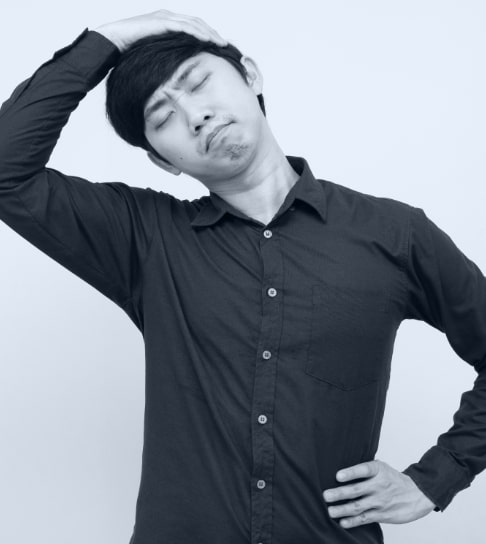
Spinal stenosis is a spinal condition that occurs when the space within the spine becomes too narrow, which causes spinal vertebrae and intervertebral discs to push into nerve roots and the spinal cord. This pressure can cause varying levels of pain (sometimes chronic or also randomly sharp), a dull ache in the back and lower body, numbness or tingling, muscle weakness, balance changes, and motor coordination problems.
Although there are a number of causes for spinal stenosis, the most common are connected to genetic conditions and lifestyle factors. Degenerative changes in the spine (such as osteoarthritis, rheumatoid arthritis, or certain bone diseases) cause conditions that can degrade the spinal discs and joints between the vertebrae, and often become more prevalent as we age. The repeated motions of how we lift, pull or push things with our bodies put habitual strain on certain regions of the spine and poor lifestyle habits around these movements impact our spines over time.
Injury, bone spurs, a bulging or herniated disc, thickened ligaments, spinal cysts or tumors, and past surgeries on the spine can all contribute to a narrowing of the spine. A narrowing of the spine puts pressure in the region, which then impacts how the discs and nerve roots interact. When discs put too much pressure on the nerve root or spinal cord it causes intense and/or chronic pain, and in extreme cases, can also lead to neurological changes.
Some patients are more prone to develop spinal stenosis, simply due to genetics. The spinal canal may be more prone to narrowing because of their DNA and how their bones were formed.



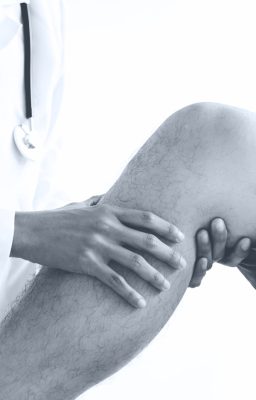
You should be aware of the symptoms of spinal stenosis – if your condition worsens, you can develop new symptoms as different nerves become affected. Some symptoms of spinal stenosis include:
Neurogenic claudication (leg heaviness/pain/fatigue, especially while walking, in one or both legs, that is only relieved with sitting down)
Sciatica or Radiculopathy (pain running from the nerves in the low back and down the leg(s))
Foot drop (difficulty in lifting front part of foot, resulting in dragging of feet to walk)
Gait problems (walking in a halting manner to avoid pain in legs/back)
Radiating arm pain (this may happen in cervical stenosis, when nerves in the neck are affected)
Loss of fine motor skills
Bowel or bladder incontinence
Numbness in the inner thigh/genital area
Severe weakness in both legs.
Reach out to our team for a consultation if you are experiencing these symptoms, particularly if they are beginning to worsen. The earlier that Dr. Jeremy Smith, M.D., can diagnose your spinal stenosis, the better your chances are for living with full range of motion in your spine.
Left untreated, spinal stenosis can worsen and begin to have an impact on daily life due to the limitations the conditions can put on a patient physically. Spinal stenosis can create problems that range from trying to live with chronic pain, to walking and having full range of motion with one’s spine. At Dr. Jeremy Smith, M.D., we believe in compassion through a patient-first approach, and in finding the best treatment solution for you and your condition, so that you can experience a return to your quality of life and achieve a pain-free future.
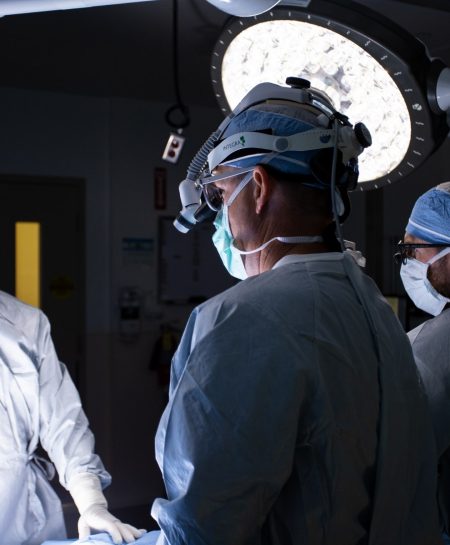
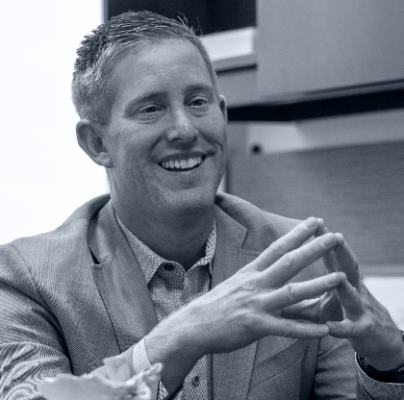
Dr. Jeremy Smith, M.D., is a fellowship-trained, highly sought after orthopaedic spinal surgeon, who specializes in artificial disc replacements, laminectomy and spinal reconstruction surgeries. He often receives referrals from other doctors for patients who have had previous failed spine surgeries or who have complex spinal conditions, and are in need of an experienced and highly trained surgeon to treat their condition. Dr. Jeremy Smith, M.D., has experience that is backed by decades of dedicated study, continued research and surgical treatment of spinal conditions and traumas. He is now one of the leading surgeons in the nation in an elite medical field.
Dr. Jeremy Smith, M.D., believes there is hope to be found for every patient, for every spinal condition – no one should be forced to live in chronic pain. He is dedicated to listening to his patients and to providing thorough assessments in order to develop the best possible treatment solution for each individual patient.
Dr. Jeremy Smith, M.D., also shares his expertise with other young doctors and team members by serving. This work leans into sharing his expertise in treating disorders of the cervical, thoracic and lumbar spine as well as degenerative disorders, spinal traumas, minimally invasive surgery, spinal oncology, complex spinal deformity and computer-assisted surgery.
Making the right decision in choosing your spinal surgeon is paramount and Dr. Jeremy Smith, M.D., has the expertise, knowledge, talent and proven track record to address your condition. Our spinal health impacts our overall health for the entire duration of our lives. Dr. Jeremy Smith, M.D., continues to seek out the latest developments in technology available through his state-of-the-art facilities in order to deliver the best possible outcomes to his patients.
Dr. Jeremy Smith, M.D., offers patients a number of options to treat spinal stenosis. Treatment options for spinal stenosis depend on the cause of the condition. Early intervention of this condition is important. Diagnostic image testing and an evaluation of your lifestyle will inform Dr. Smith’s assessment of your condition, as he determines the best treatment options available for you. A laminectomy, spinal fusion or coflex procedure are all common treatment options that address the narrowing of the spinal canal, and each alleviate pain and pressure in the region.
LAMINECTOMY
A laminectomy is the surgical removal of a portion of the vertebral bone in the spine. The removal of the lamina offers more space to the narrowed portion of the spine, which alleviates spinal stenosis. By removing the bone or tissue in the spine that is causing pressure to be put on the nerve(s), Dr. Jeremy Smith, M.D., is able to create space for nerves to be relieved of too much pressure and thus, alleviate pain. Laminectomies are very common procedures and the results are strong with a 90% success rate.
SPINAL FUSION
A spinal fusion may be performed in order to alleviate the pressure caused by spinal stenosis. During this procedure, multiple vertebrae are “fused” together to cease independent movement, which grates on the nerve(s) and causes pain. A fusion restores strength and stability to the region.
Depending on the spinal condition, a spinal fusion boasts a 70-90% success rate. The long-term outcomes from a spinal fusion however, can involve a non-fusion or hardware failure, the development of Adjacent Segement Disease, or a spinal muscle injury.
Although patients experience slightly less range of motion with a spinal fusion surgery, the introduction of space to a narrowing spine will yield pain relief in the region. Dr. Jeremy Smith, M.D., offersan ADR as an option instead of a fusion, but not all patients are eligible for this procedure.

WHAT IS THE COFLEX PROCEDURE?
A Coflex Procedure may be the best treatment option for alleviating your spinal stenosis. During a Coflex Procedure, a titanium implant is surgically placed in the back of a patient’s spine in order to establish better support in the region and to preserve motion in the spine.
HOW COFLEX WORKS TO ALLEVIATE SYMPTOMS
Coflex is an alternative to fusion surgery that offers several benefits to patients. A Coflex Procedure may minimize disc degeneration and prevents collapse and re-stenosis while addressing back and leg pain. It is a non-fusion, motion-sparing, minimally invasive alternative to laminectomy with or without spinal fusion.
Dr. Jeremy Smith, M.D., usually prefers to recommend the Coflex Procedure to spinal fusion because it may minimize adjacent disc degeneration – which means less pressure on another region of the spine – and it also allows patients to return to daily activities more quickly than spinal fusion.
Lifestyle choices may play a role in determining which treatment option is best suited for your spinal condition. Spinal stenosis can be a result of a previous injury or an existing condition – it may need to be treated alongside the treatment of your arthritis, herniated disc(s) and/or bone spur(s).
During a laminectomy, an incision is made, the spinal canal is decompressed, the spinal nerve is decompressed, and then the back part of the vertebra (the “lamina”) is removed.
During a spinal fusion, after the initial incision is made, the spinal canal and spinal nerves are decompressed, and then one vertebra is fused to an adjacent vertebra.
A Coflex Procedure is performed under general anesthesia. After an incision is made and the surgical decompression is complete, a spinal surgeon will insert and affix a titanium implant to the back of a patient’s spine.
It may take up to 4 to 6 weeks for the first phase of recovery from a spinal surgery. The nerves can take up to 1-2 years for the full healing process to complete.
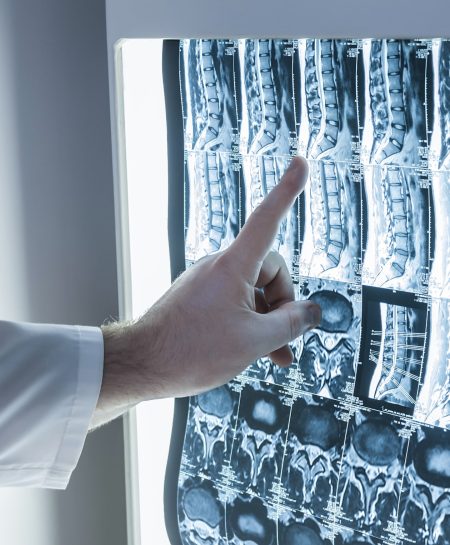

With decades of experience, expertise, and a proven track record, Dr. Jeremy Smith, M.D., offers Orange County patients the best possible outcome for your spinal condition needs. Reach out to one of our dedicated staff members today to book your consultation with Dr. Smith.
“Dr. Smith is not only <em>extremely compassionate</em> and caring, but a <em>talented and skilled surgeon</em>. He performed my second cervical fusion and will now do a posterior cervical fusion. <em>I am truly grateful</em> to have been referred to him with all of the pain I’ve suffered. I am certain that working together we will find the pain relief I so desperately need. <em>Thank you Dr. Smith!</em>”

"I had spinal fusion surgery in 2019 from Dr. Smith. I was personally devastated. As an extremely active individual, I thought my life was over. Going into 2023, I'm in better physical shape than anytime in my life. As an avid cyclist I ride 100 plus miles harder and faster than anyone I know. I ski. I work out. I've had ZERO issues. If you ever want a pro bono testimonial I'm all in. Dr. Smith and team literally saved my life."

"Thank you for truly saving my life on March 30, 2022. The pain I had was almost too over bearing for me that it sent me into a depression that was changing my whole life and not for the better. You and your staff and the entire hospital, treated me like a VIP/ aka.Princess and I’m eternally grateful that it all started with you, your wonderful PAs and your God blessed talents."
What are the primary causes of spinal stenosis?
There are a number of causes that lead to spinal stenosis, but the most common are degenerative changes in the spine. These may include: osteoarthritis, rheumatoid arthritis, or certain bone diseases. Injury, bone spurs, a bulging or herniated disc, thickened ligaments, spinal cysts or tumors, or past surgeries on the spine. All are contributing factors to spinal stenosis. Your genetic makeup can also be the source of your spinal stenosis.
What are the typical symptoms of spinal stenosis?
Some symptoms of spinal stenosis include: neurogenic claudication (leg heaviness/pain/fatigue, especially while walking, in one or both legs, that is only relieved with sitting down); sciatica or radiculopathy (pain running from the nerves in the low back and down the leg(s)); foot drop (difficulty in lifting front part of foot, resulting in dragging of feet to walk); gait problems (walking in a halting manner to avoid pain in legs/back); radiating arm pain; loss of fine motor skills or bowel or bladder incontinence; numbness in the inner thigh/genital area; severe weakness in both legs. Reach out to our team for a consultation if you are experiencing these symptoms, particularly if they are beginning to worsen - their impact can cause additional complications and affect your quality of life.
How do I know which treatment option is best for me?
Your lifestyle and DNA may play a role in the severity of your spinal stenosis. Dr. Smith’s assessment of your condition may include diagnostic image testing in order to determine the best treatment options available to you. If your symptoms begin to worsen, you can develop new symptoms as different nerves become affected. The earlier that Dr. Jeremy Smith, M.D., can diagnose your spinal stenosis, the better your chances are for living with full range of motion in your spine.
What is the recovery process like after a spinal stenosis procedure?
Treatment for spinal stenosis usually involves a laminectomy, spinal fusion or Coflex Procedure. It may take anywhere from 4 to 6 weeks to recover, depending on the treatment option you select.
Are there non-surgical treatments available for spinal stenosis?
Dr. Jeremy Smith, M.D., offers patients several non-invasive treatment options for spinal stenosis, including: medications, steroids, physical, and massage therapies. However, with cutting-edge minimally invasive procedures available, like the Coflex Procedure, some patients are more likely to experience better long-term results for this condition with a surgical intervention.
What is the average cost of spinal stenosis treatment in Orange County?
Costs will vvary depending on many different factors. Talk to your doctor and insurance company regarding your treatment plan.


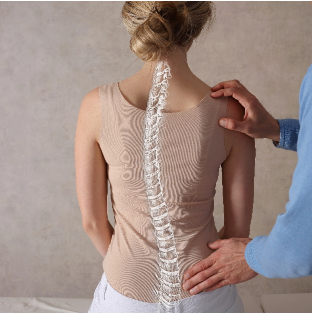


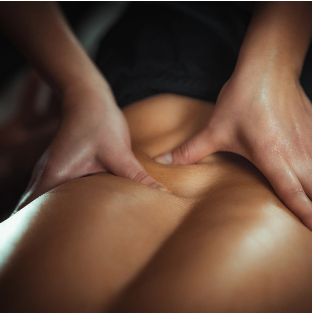
CATHERINE JOHNSON • LAGUNA BEACH, CA